[10000印刷√] f(x)=2x+1 table of values 179364-F(x)=2x+1 table of values
II Use the graph of f(x), the table of selected values of g(x), and the equation for h(x) to find the indicated values h(x) = (2x 1)2 f(x) X x 15 2 10 28 25 25 10 30 g(x) 35 22 26 a h(g(3)) = b g(h(2))) = c Find x if gtf(x)) = 25;A g(x) = 32x b g(x) =16x c g(x) = 2x d g(x) =1/2 x Solution Remember that when we horizontally stretch a function by 1/a, we divide the input value by a Why don't we apply this to theThe function F(X)= 160 * 2^X gives the population after x months How many crickets will there be after 2 years?

Solved F X 2x 1 Pair A F X X 1 3 1 Fill In T Chegg Com
F(x)=2x+1 table of values
F(x)=2x+1 table of values-∫ 2 1/x dx = ∫ 2 dx ∫ (1/x) dx ∫ 2 dx is given by 12 and ∫ (1/x) dx by 14 in table of integral formulas, hence ∫ 2 1/x dx = 2x ln x c 5 Integration by Substitution ∫f(u) du/dx dx = ∫f(u) du Example Evaluate the integral ∫(x 2 1) 2x dx Solution Let u = x 2 1, du/dx = 2x and the given integral canSolve your math problems using our free math solver with stepbystep solutions Our math solver supports basic math, prealgebra, algebra, trigonometry, calculus and more



Which Of The Following Tables Of Values Represent Ordered Pairs For The Function F X 2x 1 X 3 6 Brainly Com
A)2,684,354,560 crickets B)640 crickets C)7,680 Algebra 1 Help please Belinda wants to invest $1000 The table below shows the value of her investment under two different options for three different years Number of years 1 2The graph of the function f(x) = (x 4)(x 1) is shown below Which statement about the function is true?F(x) = x 2 − 2x − 3 and g(x) = x 1 then we are looking for the area in which f(x) ( the left hand side of the expression ) is less than g(x) ( the right hand side ) This is the shaded area of the graph, where x takes values between 1 and 4
Start with a table of values You can choose different values for x, but once again, it's helpful to include 0, some positive values, and some negative values If you think of f(x) as y, each row forms an ordered pair that you can plot on a coordinate grid Plot the points Answer Since the points lie on a line, use a straight edge to draw the lineThe output values of the absolute value are equal to 4 at \(x=1\) and \(x=9\) The graph of \(f\) is below the graph of \(g\) on \(1Then what I'm going to do is substitute in one at a time each x value and find the corresponding y value For example, when x equals 1, my y value is going to be 2 times 1 plus 3, which means y is going to be 2 plus 3 which is 5 That's going to be the first dot on my graph (1,5) Then when the x equals zero I'll do the same process
A)2,684,354,560 crickets B)640 crickets C)7,680 Algebra 1 Help please Belinda wants to invest $1000 The table below shows the value of her investment under two different options for three different years Number of years 1 2Draw the graph of f Given f(x) = x2 To complete the table, we put values of x in f(x) f(−4) = (–4)2 = 16 f(−3) = (–3)2 = 9 f(−2) = (–2)2 = 4 f(−1) = (−1)2 = 1 f(0) = (0)2 = 0 f(1) = (1)2 = 1 f(2) = (2)2 = 4 f(3) = (3)2 = 9 f(4) = (4)2 = 16 So, our table looks like Here we are given x is real & we can put any value of x HenceSee the explanation y=2x1 Since this is the slopeintercept equation for a straight line, the table only needs two points However, I'm going to determine 4 points (ordered pairs) Determine values of x, then calculate y



Mathematics Learners Material Module 2 Q
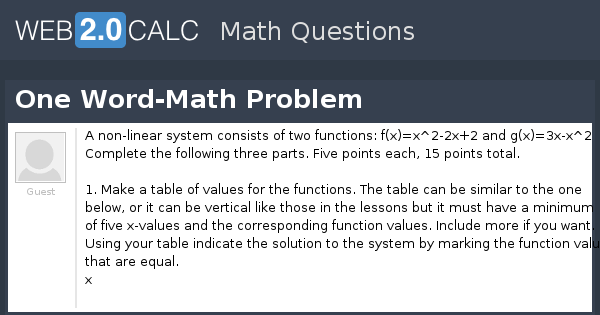


View Question One Word Math Problem
Question Find As n(s(2x1) Ix=2 The Table Below Gives Values Of The Differentiable Functions F(x) And G(x) And Their Derivatives F'(x) And 8'(x) At Selected Values Of X F F' 8 S' 1 3 8 2 3 2 6 12 Nim 5 1 5 5 1 8 Nicu 3 2 The Graph Below Shows Y =h(x) And Y= J(x) The Solid Graph, Y =h(x), Consists Of 2 Linear Pieces The Dashed Graph, Y = J(x), ConsistsThe right tail area is given in the name of the table For example, to determine the 05 critical value for an F distribution with 10 and 12 degrees of freedom, look in the 10 column (numerator) and 12 row (denominator) of the F Table for alpha=05 F (05, 10, 12) =1 f(x) = and that you want to find the value of x at which f(x) = h(x) x1 Of course you could create a table for each f(x) and h(x), but setting f(x)=h(x) and solving for x algebraically would be faster and more efficient 1 f(x) = = 2x 3 = h(x) Then 1 = (x1)(2x3) = 2x^2 3x 2x 3 x1 or 1 = 2x^2 5x 3, or 2x^2



Solution Example 4 Graph An Equation In Two Variables Graph The Equation Y 2x 1 Step 1 Construct A Table Of Values X 2 1 012 Y31 3 5 Ppt Download
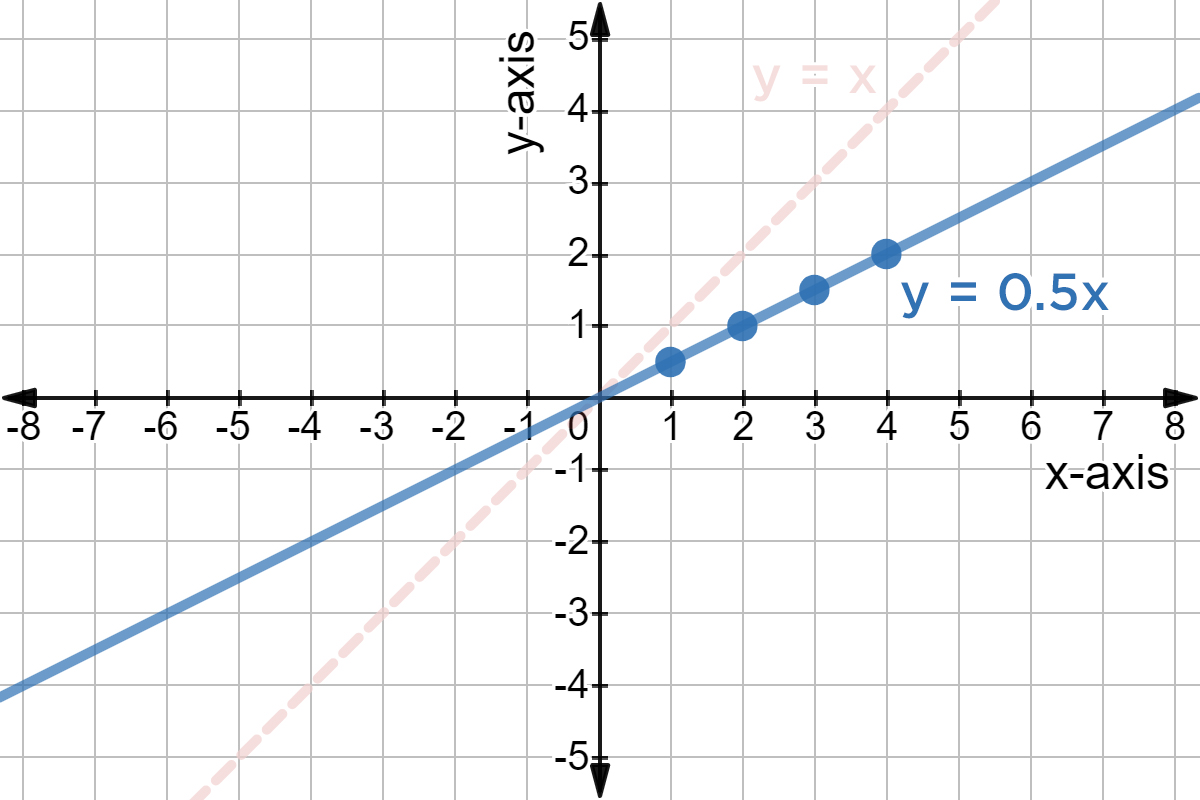


Graphing Linear Functions Expii
Similarly, the function \(f\) does not have an absolute minimum, but it does have a local minimum at \(x=1\) because \(f(1)\) is less than \(f(x)\) for \(x\) near 1 Figure \(\PageIndex{3}\) This function \(f\) has two local maxima and one local minimumIn other words, we need an input x x within the interval 69 < x < 71 69 < x < 71 to produce an output value of f (x) f (x) within the interval 79 < f (x) < 81 79 < f (x) < 81 We also see that we can get output values of f (x) f (x) successively closer to 8 by selecting input values closer to 7 In fact, we can obtain output valuesRecall the table of values for a function of the form f (x) = b x f (x) = b x whose base is greater than one We'll use the function f (x) = 2 x f (x) = 2 x Observe how the output values in Table 1 change as the input increases by 1 1 x x


Graphing Types Of Functions



Using Transformations To Graph Functions
Recall the table of values for a function of the form f (x) = b x f (x) = b x whose base is greater than one We'll use the function f (x) = 2 x f (x) = 2 x Observe how the output values in Table 1 change as the input increases by 1 1 x x66 Sketching graphs (EMCHB) Functions of the form \(y = ax^{3} bx^{2} cx d\) (EMCHC) The effects of \(a\) on a cubic function Complete the table below and plot the graphs of \(f(x)\) and \(g(x)\) on the same system of axesA Few Notes About Example 1 In this first example, I chose 2, 0, and 2 as my x coordinates After substituting those values into the equation y = 2x 1, I found my y values to be 3, 1, and 5



How Do You Graph F X Abs 2x 3 Socratic



How Do You Complete A Table For The Rule Y 3x 2 Then Plot And Connect The Points On Graph Paper Socratic
Example 4 Given that g\left( x \right) = {x^2} 3x 1, find g\left( {2x 1} \right) In previous examples, we have been evaluating a function by a number This time the input value is no longer a fixed numerical value, but instead an expression It might look complicated but the procedure remains the sameColumns of tables in Desmoscom have different behavior depending their headings If you put an function of x in the 2nd header we'll fill it in as a function table, calculating the values for you For example, if you have "x_1" and "2x_11" as your headings, we'll fill in the 2nd column for any point you put in the firstSimilarly, the function \(f\) does not have an absolute minimum, but it does have a local minimum at \(x=1\) because \(f(1)\) is less than \(f(x)\) for \(x\) near 1 Figure \(\PageIndex{3}\) This function \(f\) has two local maxima and one local minimum


1
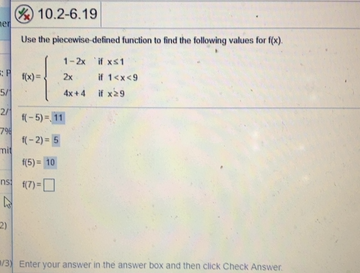


Use The Piecewise Defined Function To Find The Following Values For F X Math F X Begin Cases 1 2x Text If X Leq 1 2x Text If 1 Lt X Lt 9 4x 4 Text If X Geq 9 End Cases Math F 7
For example, say you have have x values of 1, 0, and 1 in your table;If we instead try a value that doesn't work, say x=3 (try 2x3=7 @ 3), Algebra Calculator shows a red "not equals" sign instead To check an answer to a system of equations containing x and y, enter the two equations separated by a semicolon, followed by the @ sign and an ordered pair containing your xvalue and yvalue Example xy=7;To do this I am going to use a table of values I am going to choose some values for the variable x, calculate the corresponding value of y and then record my results in a table So, for example when x = 1 then y = 2 1 1 = 3 and when x = 2 then y = y = 2 2 1 = 5 Here is my table including these two values of x and a few more


Limits


Math Scene Equations Iii Lesson 3 Quadratic Equations
Recall the table of values for a function of the form f (x) = b x f (x) = b x whose base is greater than one We'll use the function f (x) = 2 x f (x) = 2 x Observe how the output values in Table 1 change as the input increases by 1 1 x xThe function F(X)= 160 * 2^X gives the population after x months How many crickets will there be after 2 years?It is helpful to have an idea about what the shape should be so you can be sure that you have chosen enough points to plot as a guide Let us start with the most basic quadratic function, latexf(x)=x^{2}/latex Graph latexf(x)=x^{2}/latex Start with a table of values Then think of each row of the table as an ordered pair
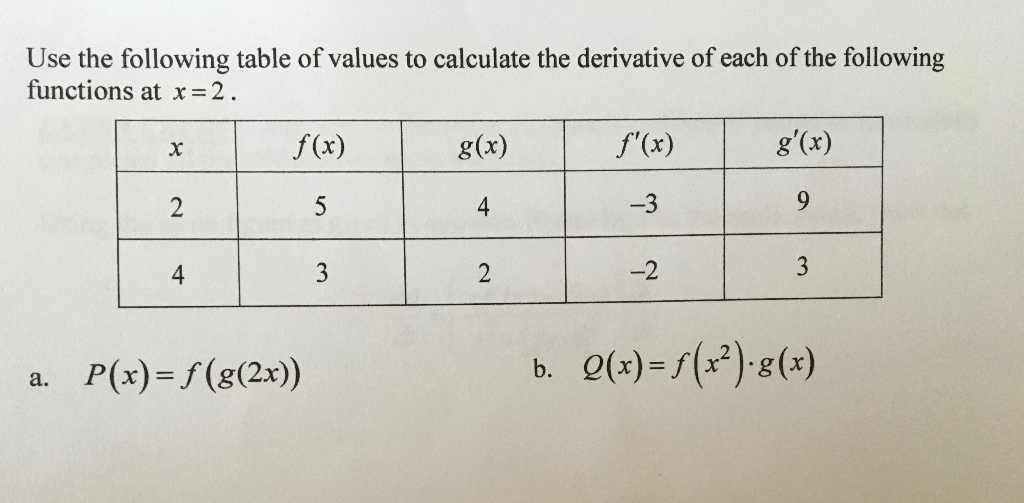


Solved Use The Following Table Of Values To Calculate The Chegg Com



Using A Table Of Values To Graph Equations
Graph f(x)=2x1 Rewrite the function Select two values, and plug them into the equation to find the corresponding values Tap for more steps Choose to substitute in for to find the ordered pair Create a table of the and values Graph the line using the slope and the yintercept, or the points SlopeExample 4 We wish to translate the graph of the function f(x) = x 3 – x by the vector The following table of values is for x taking values between –2 and 2 First we calculate f(x) Next we move all the outcomes down by 1 ( eg the value for x = – 2 becomes the value for x = –1)F (x) = 1 2 x f ( x) = 1 2 x Rewrite the function as an equation y = x 2 y = x 2 Use the slopeintercept form to find the slope and yintercept Tap for more steps The slopeintercept form is y = m x b y = m x b, where m m is the slope and b b is the yintercept y = m x b y = m x b


Math Scene Equations Iii Lesson 3 Quadratic Equations



Solved F X 2x 1 Pair A F X X 1 3 1 Fill In T Chegg Com
To find their y values, input your x values in place of x in the equation, like so f(x)=−1/2x−3 f(x)=−1/2(1)−3 Then solve for y y=5/2 or y=25 Repeat this for x values 0 and 1 f(x)=−1/2(0)−3 Solve for y y=3 Finally, for 1 f(x)=−1/2x−3 f(x)=−1/2(1)−3 Solve for y y=7/2 or y=35Columns of tables in Desmoscom have different behavior depending their headings If you put an function of x in the 2nd header we'll fill it in as a function table, calculating the values for you For example, if you have "x_1" and "2x_11" as your headings, we'll fill in the 2nd column for any point you put in the firstThe equation $$ y = 2x $$ expresses a relationship in which every y value is double the x value, and $$ y = x 1 $$ expresses a relationship in which every y value is 1 greater than the x value So what about a Table Of Values?


How Do You Graph F X 1 2x 3 Using A Table Of Values Socratic



Evaluating And Solving Functions College Algebra
Start with a table of values You can choose different values for x, but once again, it's helpful to include 0, some positive values, and some negative values If you think of f(x) as y, each row forms an ordered pair that you can plot on a coordinate grid Plot the points Answer Since the points lie on a line, use a straight edge to draw the lineSo applying a function f and then its inverse f1 gives us the original value back again f1 ( f(x) ) = x We could also have put the functions in the other order and it still works f( f1 (x) ) = xThe right tail area is given in the name of the table For example, to determine the 05 critical value for an F distribution with 10 and 12 degrees of freedom, look in the 10 column (numerator) and 12 row (denominator) of the F Table for alpha=05 F (05, 10, 12) =



Draw The Graph Ofthe Polynomial F X 3x 2 2x 1



Solved 2 3 0 3 4 F X 5 1 2 7 F X 24 01 The Table Chegg Com
Solve your math problems using our free math solver with stepbystep solutions Our math solver supports basic math, prealgebra, algebra, trigonometry, calculus and moreThe function is increasing for all real values of x where x < 0 The function is increasing for all real values of x where x < 1 and where x > 4 The function is decreasing for all real values of x where1 < x < 4Example 12 Let N be the set of natural numbers Define a real valued function f N → N by f (x) = 2x 1 Using this definition, complete the table given below Given f(x) = x2 To complete the table, we put values of x in f(x) f(1) = 2(1) 1 = 2 1 = 3 f(2) = 2(2) 1 = 4



Evaluating And Solving Functions College Algebra


Www Ringgold Org Cms Lib Pa Centricity Domain 227 Algebra i keystone review packet answer key Pdf
The equation $$ y = 2x $$ expresses a relationship in which every y value is double the x value, and $$ y = x 1 $$ expresses a relationship in which every y value is 1 greater than the x value So what about a Table Of Values?The domain of a function on a graph is the set of all possible values of x on the xaxis For domain, we have to find where the x value starts and where the x value ends ie, the part of xaxis where f(x) is defined See the example given below to understand this conceptGiven A linear equation #color(red)(y=f(x)=3x2# Note that the parent function is #color(blue)(y=f(x)=x# #color(green)("Step 1"# Consider the parent function and create a data table followed by a graph to understand the behavior of a linear graph #color(red)(y=f(x)=3x2# compares with the parent function #color(blue)(y=f(x)=x# Graph of the parent function


Solution Y X 2 2x 1 Graph The Quadratic Function Label The Vertex And Axis Of Semitry



Function Families Ck 12 Foundation
If we have f(x) = 2x, 0≤x≤1, then f(x) is a (a) Probability distribution (b) Probability density function (c) Distribution function (d) Continuous random variable MCQ 716 Numbers selected by a random process and are equally distributed in a table are calledDraw the graph of f Given f(x) = x2 To complete the table, we put values of x in f(x) f(−4) = (–4)2 = 16 f(−3) = (–3)2 = 9 f(−2) = (–2)2 = 4 f(−1) = (−1)2 = 1 f(0) = (0)2 = 0 f(1) = (1)2 = 1 f(2) = (2)2 = 4 f(3) = (3)2 = 9 f(4) = (4)2 = 16 So, our table looks like Here we are given x is real & we can put any value of x HenceThe line that goes down the middle is called the line of reflection, in this case that line is they yaxis The equations for quadratic functions have the form f(x) = ax2 bx c where In the basic graph above, a= 1, b= 0, and c= 0 Here are some graphs with different values for a, b, and c



Graph A Linear Function F X 3x 2 Youtube



12 1 Finding Limits Numerical And Graphical Approaches Mathematics Libretexts
F1 (10) is undefined e) a = f1 (10) if and only if f(a) = 10 The value of x for which f(x) = 10 is equal to 8 and therefore f1 (10) = 8 More Questions with Solutions Use the table below to find the following if possible 1) g1 (0) , b) g1 (10) , c) g1 ( 5) , d) g1 (7) , e) g1 (3) Solution a) According to the the definition of the inverse functionThis video provides an example of graphing a line solved for y using a table of valuesComplete Video List at http//wwwmathispower4ucomSearch by Topic atThe function, g(x), is obtained by horizontally stretching f(x) = 8x by a scale factor of 1/4 Which of the following is the correct expression for g(x)?


Graphing Types Of Functions



Complete The Table Of Values For The Function F X 1 X Brainly Com
Graphing the parent quadratic function using a table of values and grid paperSo applying a function f and then its inverse f1 gives us the original value back again f1 ( f(x) ) = x We could also have put the functions in the other order and it still works f( f1 (x) ) = xThe symbol f(x), which is often used to name an algebraic expression in the variable x, can also be used to denote the value of the expression for specific values of x For example, if f(x) = 2x 4 where f{x) is playing the same role as y in Equation (2) on page 285, then f(1) represents the value of the expression 2x 4 when x is


Solved Find The Inverse For The Following Functions If It Does Not Exist Show Why F X 2x 1 1 The Values Of G And G Are Given In Table Course Hero



Ex Complete A Table Of Values Given A Function Rule Youtube
Example 12 Let N be the set of natural numbers Define a real valued function f N → N by f (x) = 2x 1 Using this definition, complete the table given below Given f(x) = x2 To complete the table, we put values of x in f(x) f(1) = 2(1) 1 = 2 1 = 3 f(2) = 2(2) 1 = 4


Q Tbn And9gcqvucpzkfsk0blj Wwa4dfpdoggnzgxamyeoi07jt1hifakrdfb Usqp Cau



Show Full Solution Thanks Mhf 401 Page 5 1 9 For F X Sin 2x 2 Homeworklib


Graphing Square Root Functions
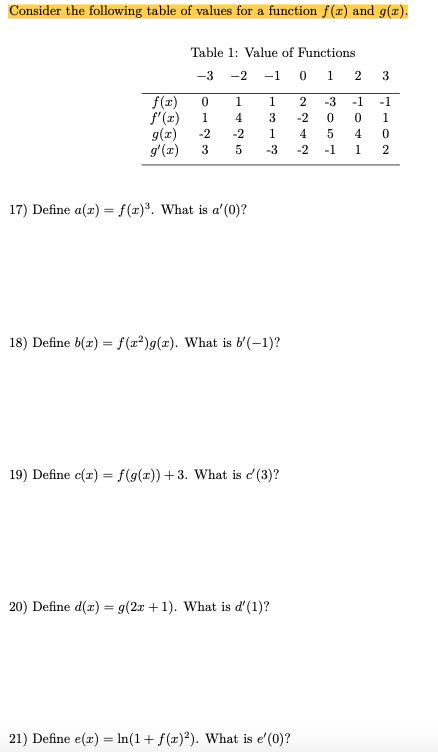


Solved Consider The Following Table Of Values For A Funct Chegg Com



Draw The Graph Of The Cubic Polynomial F X X 3 2x 2


Math Scene Equations Iii Lesson 3 Quadratic Equations
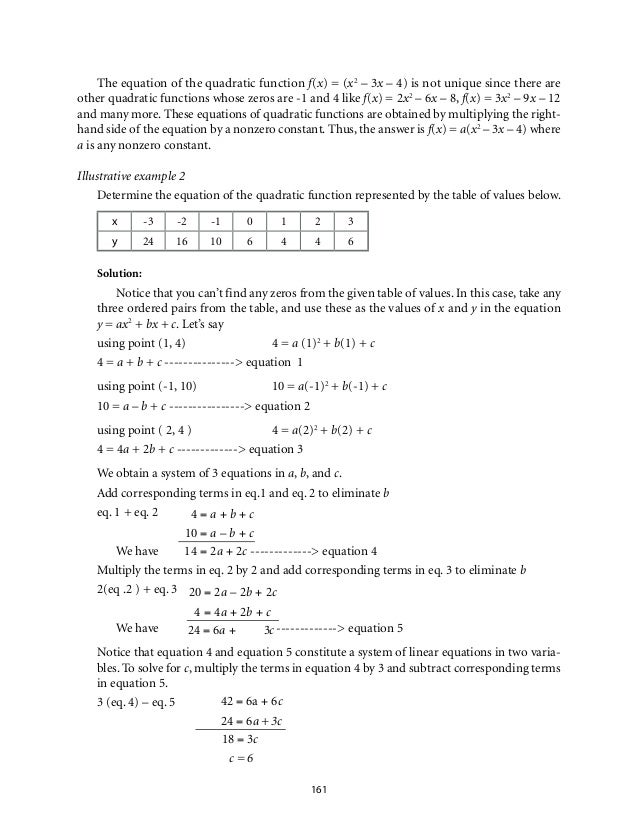


Math 9 Module 2


1
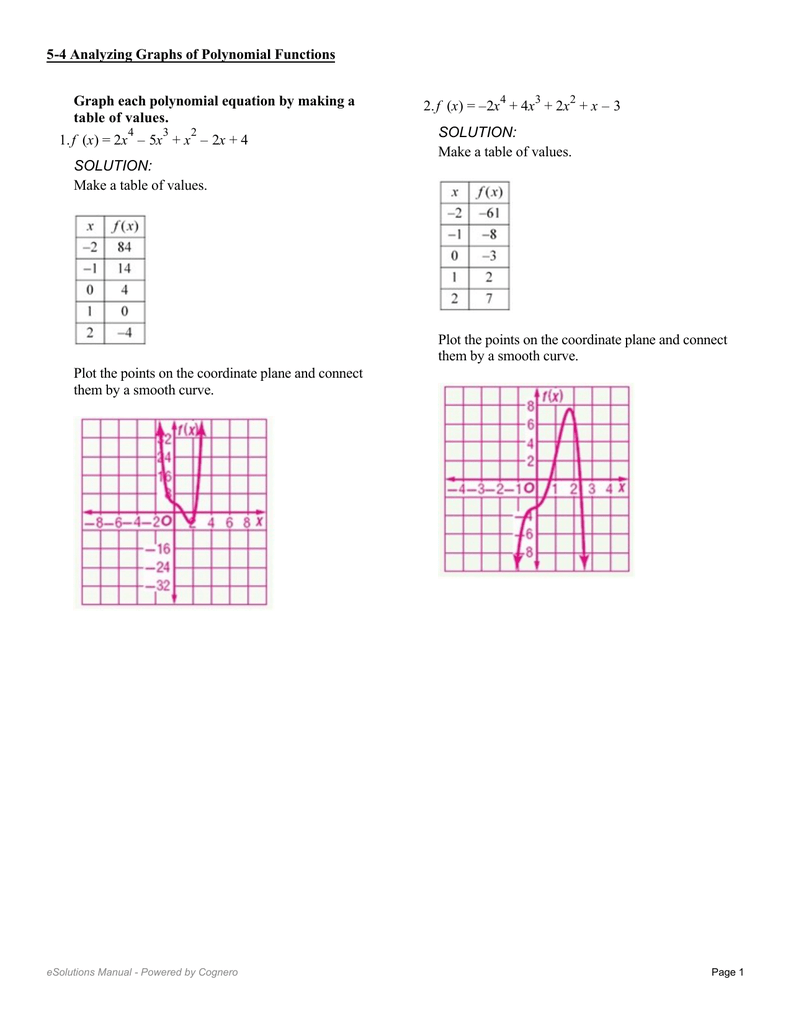


Graph Each Polynomial Equation By Making A Table Of Values 1 F X



Evaluating Composite Functions Using Tables Video Khan Academy



How To Graph Y 1 2x Youtube



Solved 4 Let F X 2x 1 A Fill In The Table Of Values Chegg Com



Completing A Table Of Values Youtube



Worked Example Chain Rule With Table Video Khan Academy
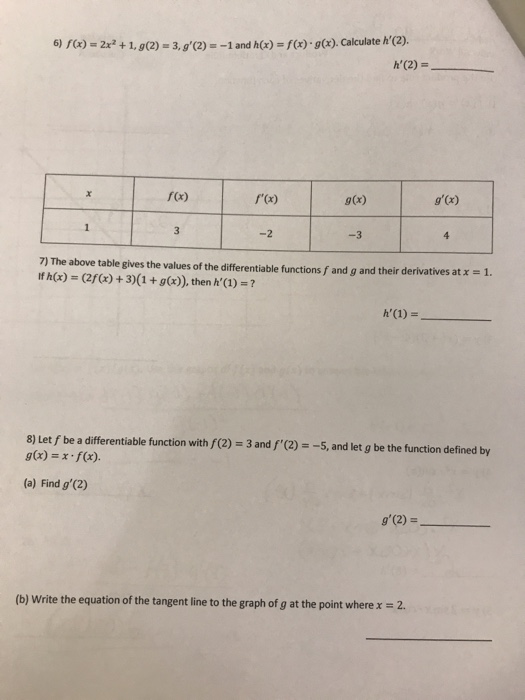


Solved 6 F X 2x斗1 G 2 3 G 2 1 And H X S F X Chegg Com



How To Graph Y 2x 1 Youtube



Algebra Of Functions



Graph Y 2x 4 With A Table Of Values Example Youtube


Math Scene Equations Iii Lesson 3 Quadratic Equations



Using A Table Of Values To Graph Equations
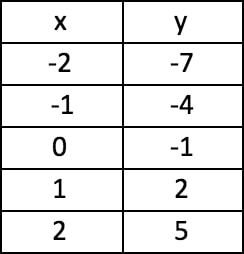


Graph A Linear Equation Using A Table Of Values Studypug



Domain And Range Precalculus I



1 Complete The Following Table Of Values For F X 2x And G X 3x2 Complete The Following Table Of Brainly Ph


The Graph Of Y 2x 1


Http Mansfieldalgebra1 Weebly Com Uploads 1 0 4 4 Rc 2 Answer Key Pdf



Complete The Following Table Of Values Using The Indicated Function Brainly Ph


Www Tamdistrict Org Cms Lib Ca Centricity Domain 3 12 Exam Solutions with detailed solutions Pdf



Answered Create A Table Of Values For The Bartleby


2


Http Www Brunswick K12 Me Us Pgroves Files 04 10 2 Practice B Key Pdf



Example 12 F X 2x 1 Complete The Table Class 11



D Quadratic Function 1 Complete The Following Table Of Values Using The Indicated Function 2 Using Brainly Ph



Steps To Draw The Graph Of Y 2x 1 Youtube



32 Graphing Linear Equations Using A Table Of Values Worksheet Worksheet Resource Plans


Www Manhassetschools Org Site Handlers Filedownload Ashx Moduleinstanceid 4085 Dataid Filename Aimm 27 with key Pdf
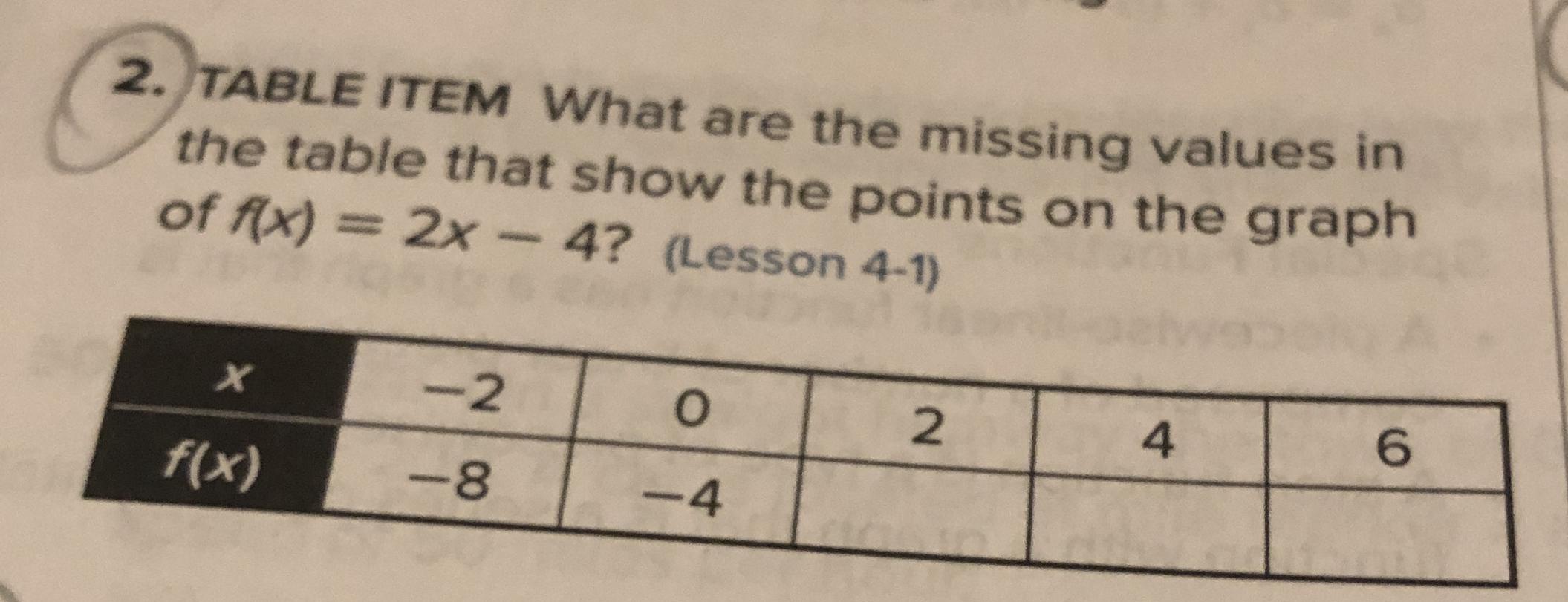


What Are The Missing Values In The Table That Show Points On The Graph Of F X 2x 4 Homework Help And Answers Slader



Ged Math Evaluating Functions Magoosh Ged Blog Magoosh Ged Blog


Q Tbn And9gcsrhmfspuwiz 8qtn7nqb0ht97gzbn Oszlrlmpq65jq4gdofi Usqp Cau


Www Hopewellarea Org Downloads 5 3 practice worksheet Pdf



Worked Example Chain Rule With Table Video Khan Academy


2


Graphing Cube Root Functions
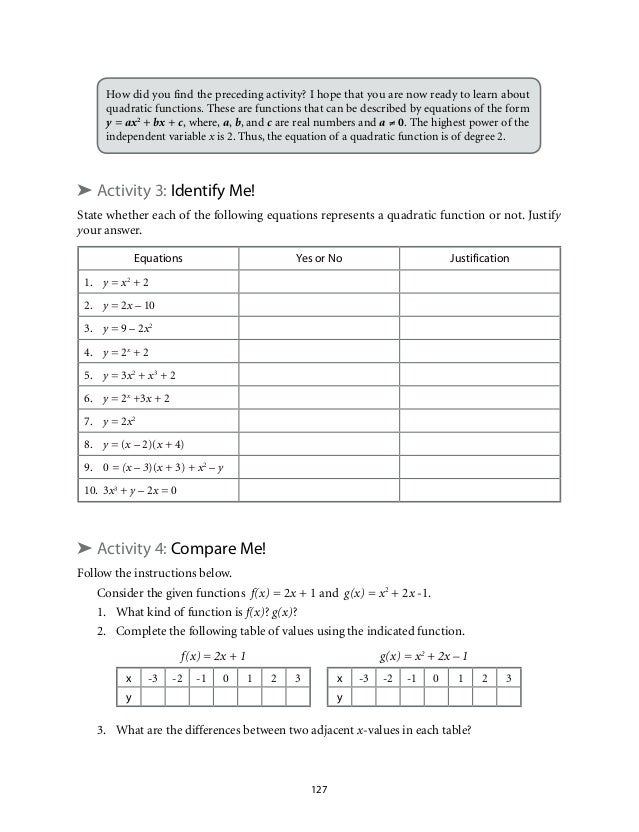


Mathematics Learners Material Module 2 Q


Introduction To Exponential Functions



2 Complete The Following Table Of Values Using The Indicated Function Please Pakisagot Po Nag Brainly Ph



Which Of The Following Tables Of Values Represent Ordered Pairs For The Function F X 2x 1 X 3 6 Brainly Com
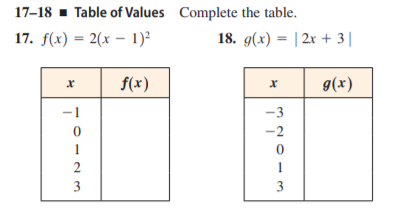


Answered 17 18 Table Of Values Complete The Bartleby



Using A Table Of Values To Graph Equations


Math Scene Inequalities Lesson 3 Absolute Values



Consider The Function F X 2x 1 Use The Above Function To Complete The Following Table Brainly Com


Sites Levittownschools Com Cbergersen Documents Big packet part i answer key 17 Pdf



Solved 2 4 X 1 F X 48 F X 5 Is X 2 3 3 1 1 5 1 2 3 Chegg Com



Ex 1 Graph A Linear Equation Using A Table Of Values Youtube


Ehsgiftedacademy Weebly Com Uploads 1 4 0 2 16 Honors Precalculus Summer Packet Answer Key 3 0 Pdf
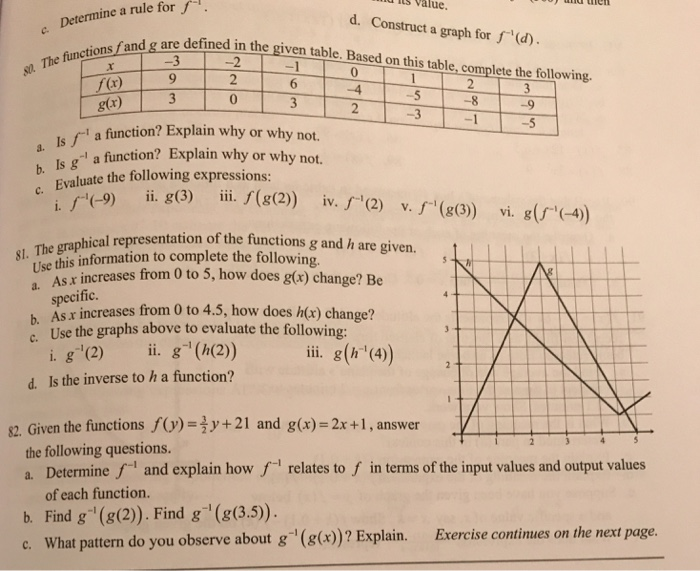


Solved U Its Value Determine A Rule For D Construct A G Chegg Com



Bell Ringer 1 If X 3x 2 Then What Is The Solution Of F 2 Hint Substitute 2 In For X 2 If F X 2x 2 3x 4 Then What Is F 3 Or What S Ppt Download


Www Manhassetschools Org Site Handlers Filedownload Ashx Moduleinstanceid 4085 Dataid Filename Aimm 27 with key Pdf
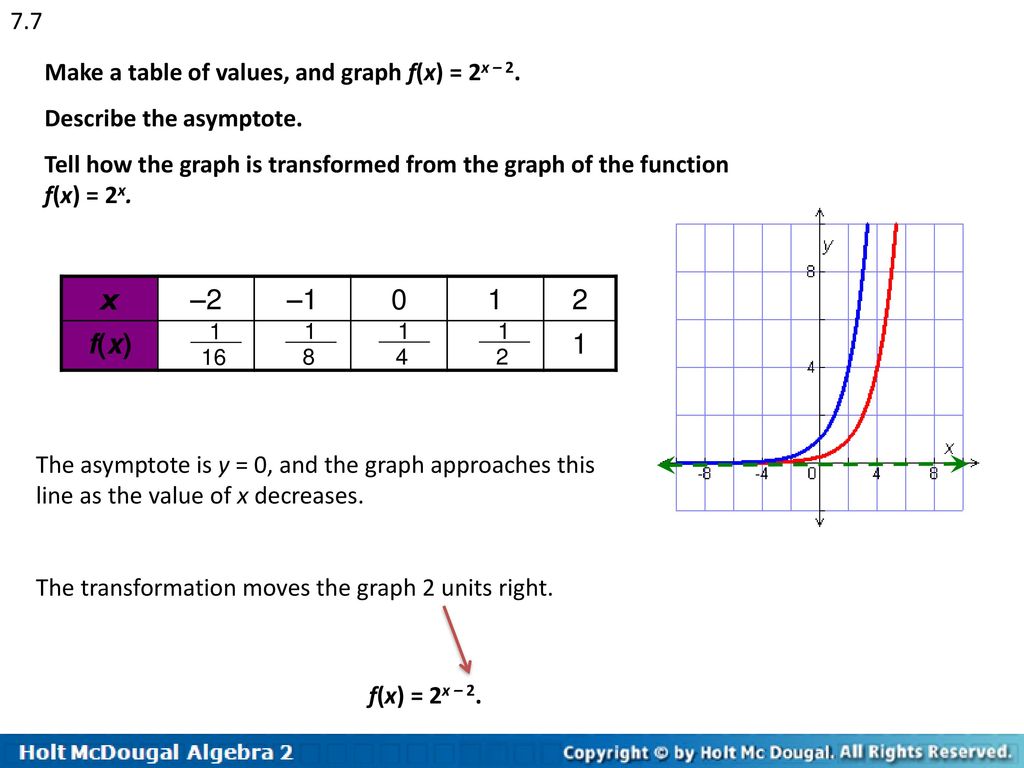


Chapter 7 Exponential And Logarithmic Functions Ppt Download
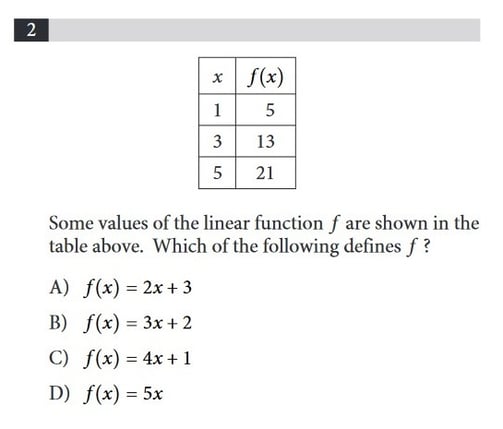


Functions On Sat Math Linear Quadratic And Algebraic


Graphing Types Of Functions



Find The Differences Between Each Adjacent Y Values In Each Table Write Them On The Blanks Provided Brainly Ph



Using A Table Of Values To Graph Equations


Www Cusd80 Com Cms Lib6 Az Centricity Domain 1003 Multiple choice review key Pdf



The Table Shows Values For Functions F X And G X X F X 3x G X 2x 1 2 19 3 1 13 1 0 1 1 Brainly Com


Secure Media Collegeboard Org Digitalservices Pdf Ap Ap16 Calculus Ab Q6 Pdf



Solved Complete The Table By Evaluating The Function F X Chegg Com



Solved Consider The Table Of Values For Some Function Y Chegg Com
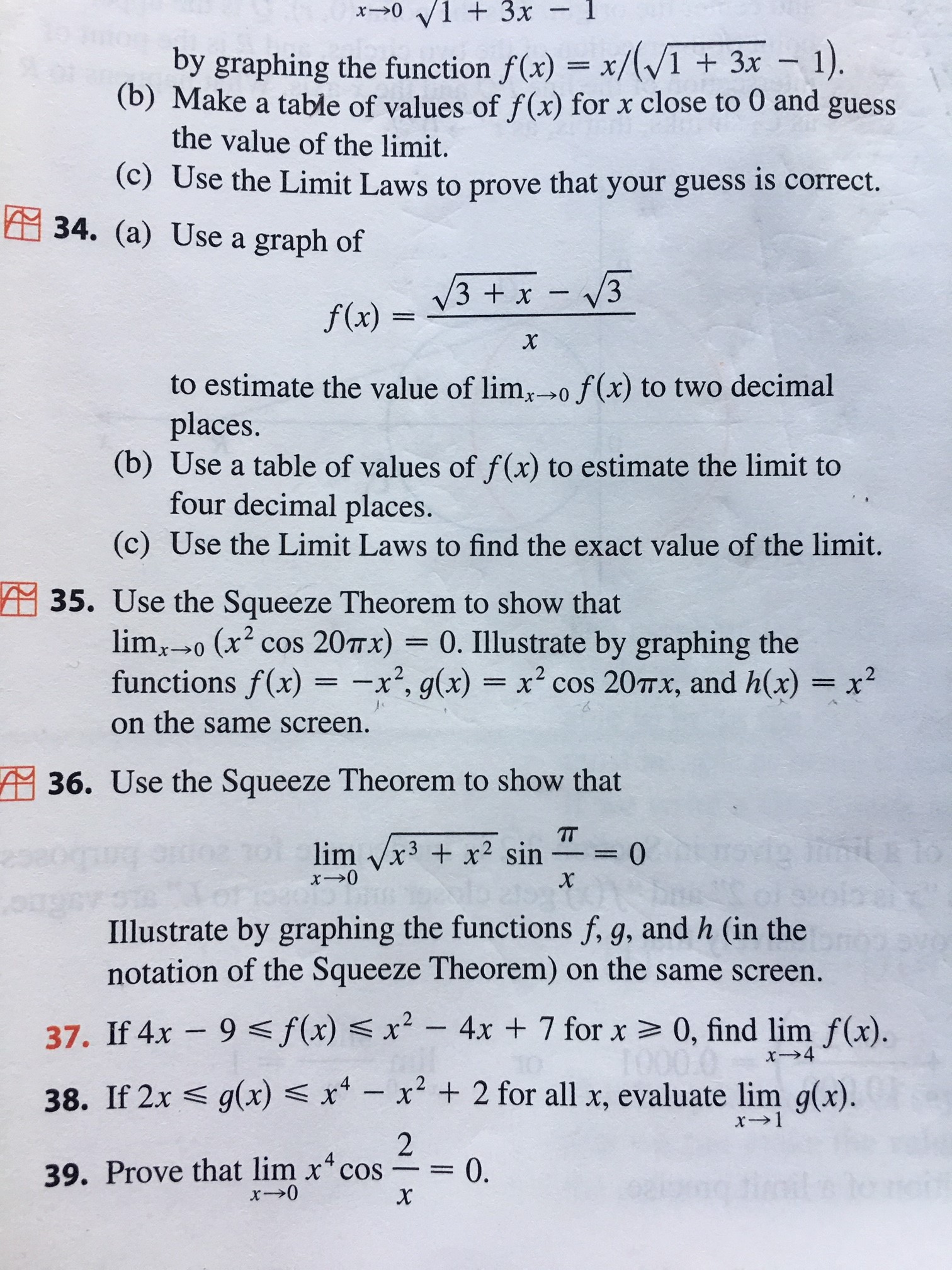


Answered X01 3x By Graphing The Function F X Bartleby



How Do I Evaluate This Integral Given A Table Of Values For F X And F X Mathematics Stack Exchange


Graphing Types Of Functions



How Do You Complete A Table For The Rule Y 3x 2 Then Plot And Connect The Points On Graph Paper Socratic


2


Trapezoidal Rule
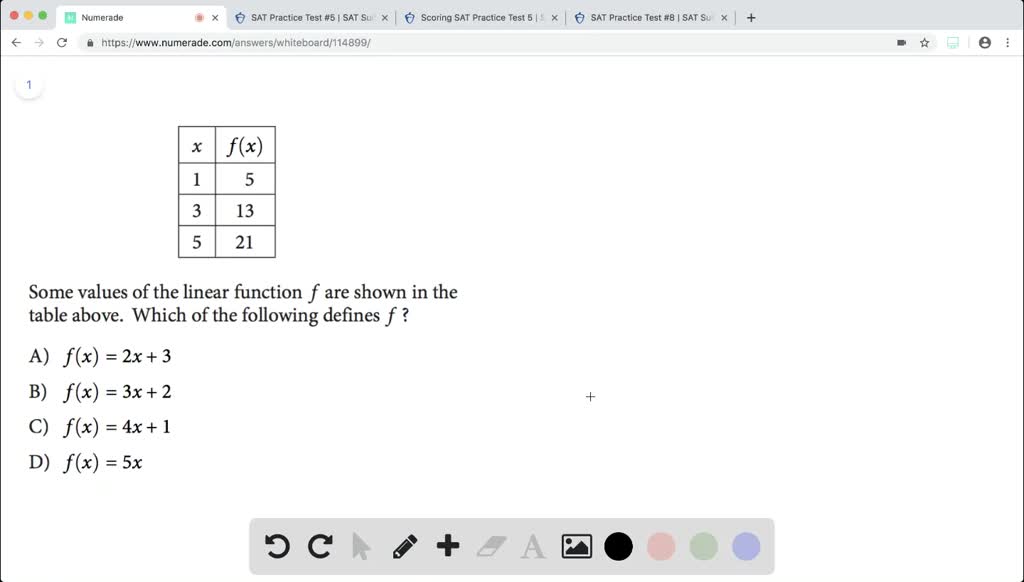


Solved Some Values Of The Linear Function F Are S


コメント
コメントを投稿